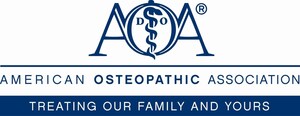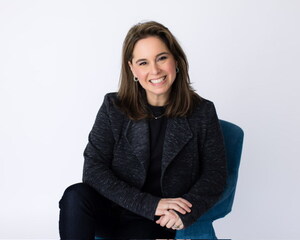CHICAGO, Sept. 19, 2017 /PRNewswire-USNewswire/ -- Osteopathic medicine, a distinctive form of medical education and practice, is marking the 125th anniversary of the rapidly growing profession.
Doctors of Osteopathic Medicine, commonly known as DOs, represent more than 11 percent of the physician workforce in the United States. Currently, about one in four U.S. medical students are enrolled in an osteopathic medical school and DOs are expected to comprise 20 percent of all physicians in 2020.
While DOs are primarily known for practicing in primary care, the whole person philosophy of medicine resonates across specialties because of its patient-centered principles, said Mark A. Baker, DO, American Osteopathic Association president.
"The osteopathic approach truly aligns with current thinking about healthcare. Most physicians now share our recognition that good health is more than the absence of disease and high quality patient care means considering physical, mental and emotional health," Dr. Baker said.
A radical philosophy in 1874
While today DOs and MDs are both fully licensed physicians, with similar and equally rigorous education and training, osteopathic medicine was considered a radical divergence in 1874.
Following the death of his wife, three of his children, and an adopted child—all from spinal meningitis— Andrew Taylor Still, MD, concluded that conventional medicine at the time was seldom evidence-based, frequently ineffective and sometimes harmful.
In response, Dr. Still pioneered the osteopathic philosophy of medicine, which is rooted in prevention and the idea that physicians should focus on treating the whole patient, rather than just the disease.
Dr. Still also recognized that human anatomy was relatively well-understood. He developed manual techniques now known as osteopathic manipulative medicine (OMM) that corrected dysfunction in the musculoskeletal system, enhancing the body's ability to heal itself.
Osteopathic education's legacy of inclusion
Dr. Still opened the first osteopathic medical school, the American School of Osteopathy in Kirksville, Missouri in 1892. A 2017 PBS documentary highlights the school's inclusivity: Its first graduating class was 27 percent female.
Today, women account for nearly 50 percent of the approximately 27,000 osteopathic medical students who attend 33 DO schools, operating in 48 locations across the United States. More than 50 percent of practicing DOs are younger than 45 and are more likely than other physicians to work in rural and underserved communities.
"This growing profession, once concentrated in just a dozen states, is influencing healthcare in our nation at the local, state and national levels. The value of the osteopathic approach is clear and the profession looks forward to sharing our unique practice beyond the United States," said Dr. Baker.
About the American Osteopathic Association
The American Osteopathic Association (AOA) represents more than 129,000 osteopathic physicians (DOs) and osteopathic medical students; promotes public health; encourages scientific research; serves as the primary certifying body for DOs; and is the accrediting agency for osteopathic medical schools. Visit DoctorsThatDO.org to learn more.
SOURCE American Osteopathic Association
WANT YOUR COMPANY'S NEWS FEATURED ON PRNEWSWIRE.COM?
Newsrooms &
Influencers
Digital Media
Outlets
Journalists
Opted In





Share this article